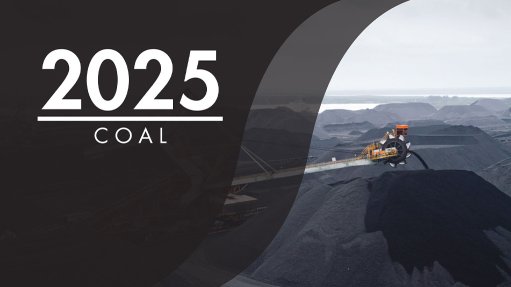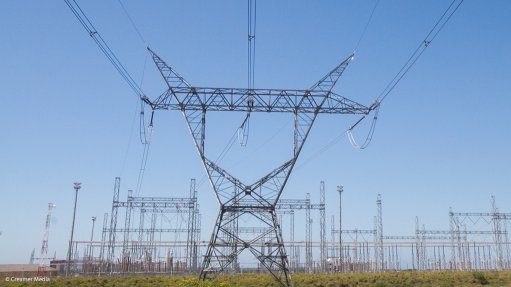The deadly gap in South Africa’s highway construction safety
This article has been supplied.
By Olebogeng Manhe, Chairman of the Gap Infrastructure Corporation (GIC)
Ten of the world’s most dangerous professions are construction jobs. Highway maintenance in particular ranks alarmingly high, mainly due to the unique set of hazards it presents. In response, construction and infrastructure development companies and partners in the public sector urgently need to engage to actively seek and implement solutions to protect the public and our workers.
For example, motor vehicle accidents (MVAs) at construction sites represent around 40% of all accidents industrywide in South Africa, accounting for nearly half of all construction-related deaths. Additionally, beyond being exposed to the typical risks associated with using heavy machinery and working at heights, construction workers also work in close proximity to fast-moving traffic. The threat of being struck by vehicles is very real, and is further amplified when working at night or in poor weather conditions with low visibility.
Meanwhile, road construction zones, intended to enhance safety and decrease travel times for commuters, often become hotspots for accidents, endangering both drivers’ and workers’ lives.
With this in mind, there are three critical areas that require greater attention to advance progress in highway construction safety:
1. Bridging gaps in traffic law enforcement
South Africa’s regulations for highway construction are extensive, but enforcement often falls short. This gap between policy and practice can result in tragic outcomes and needless loss of life, leaving families devastated. The solution is a greater commitment from traffic law enforcement, ensuring that officers are present and actively involved in managing traffic flow at road construction sites, especially those identified as high-risk.
Another major issue is the inconsistent application of safety measures across different construction zones. While some sites are well-regulated with clear signage, proper lighting, and active monitoring, others lack even basic safety provisions. By standardising enforcement practices at a regulatory level and ensuring that every site meets the highest safety standards, we can create a safer environment for both workers and motorists.
2. Promoting public awareness and responsibility
While construction companies and regulatory bodies play a crucial role in ensuring safety, the responsibility also extends to the public. Motorists must be made aware of the dangers posed by construction zones and the importance of adhering to speed limits and traffic signs. Public awareness campaigns can play an important role in this, educating drivers about the risks and emphasising the human cost of accidents in construction zones, and instilling a sense of urgency and responsibility among drivers.
Stricter penalties for traffic violations near construction zones can further act as a strong deterrent to reckless road behaviour. Higher fines and the possibility of licence suspension would also encourage drivers to take construction zone warnings seriously.
3. Creating a dedicated safety fund
To improve safety at high-risk roadwork sites, the public sector, with assistance from private institutions, could introduce a dedicated safety fund. By investing in the latest safety equipment, advanced technologies, and infrastructure improvements, this fund could play a pivotal role in reducing the number of accidents and fatalities in dangerous zones.
There are many types of advanced technology that could help lower road accident risk. The use of automated flagger assistance devices (AFADs) and real-time monitoring systems, for example, could be installed at all highway construction sites, providing an additional layer of protection for both workers and drivers.
However, new technologies can be too costly for widespread adoption in roadworks. A safety fund could alleviate this pressure from construction companies, boosting innovation and pushing the industry further into the fourth industrial revolution.
Ultimately, improving safety in highway construction zones requires coordinated efforts from all stakeholders in both the public and private sectors. In response, public-private partnerships (PPPs) and engagements can offer a powerful means of pooling resources and expertise to enhance safety standards. These collaborations could facilitate the required policy changes, ensure effective regulation management, and secure funding to make these improvements a reality.
Article Enquiry
Email Article
Save Article
Feedback
To advertise email advertising@creamermedia.co.za or click here
Comments
Announcements
What's On
Subscribe to improve your user experience...
Option 1 (equivalent of R125 a month):
Receive a weekly copy of Creamer Media's Engineering News & Mining Weekly magazine
(print copy for those in South Africa and e-magazine for those outside of South Africa)
Receive daily email newsletters
Access to full search results
Access archive of magazine back copies
Access to Projects in Progress
Access to ONE Research Report of your choice in PDF format
Option 2 (equivalent of R375 a month):
All benefits from Option 1
PLUS
Access to Creamer Media's Research Channel Africa for ALL Research Reports, in PDF format, on various industrial and mining sectors
including Electricity; Water; Energy Transition; Hydrogen; Roads, Rail and Ports; Coal; Gold; Platinum; Battery Metals; etc.
Already a subscriber?
Forgotten your password?
Receive weekly copy of Creamer Media's Engineering News & Mining Weekly magazine (print copy for those in South Africa and e-magazine for those outside of South Africa)
➕
Recieve daily email newsletters
➕
Access to full search results
➕
Access archive of magazine back copies
➕
Access to Projects in Progress
➕
Access to ONE Research Report of your choice in PDF format
RESEARCH CHANNEL AFRICA
R4500 (equivalent of R375 a month)
SUBSCRIBEAll benefits from Option 1
➕
Access to Creamer Media's Research Channel Africa for ALL Research Reports on various industrial and mining sectors, in PDF format, including on:
Electricity
➕
Water
➕
Energy Transition
➕
Hydrogen
➕
Roads, Rail and Ports
➕
Coal
➕
Gold
➕
Platinum
➕
Battery Metals
➕
etc.
Receive all benefits from Option 1 or Option 2 delivered to numerous people at your company
➕
Multiple User names and Passwords for simultaneous log-ins
➕
Intranet integration access to all in your organisation





















